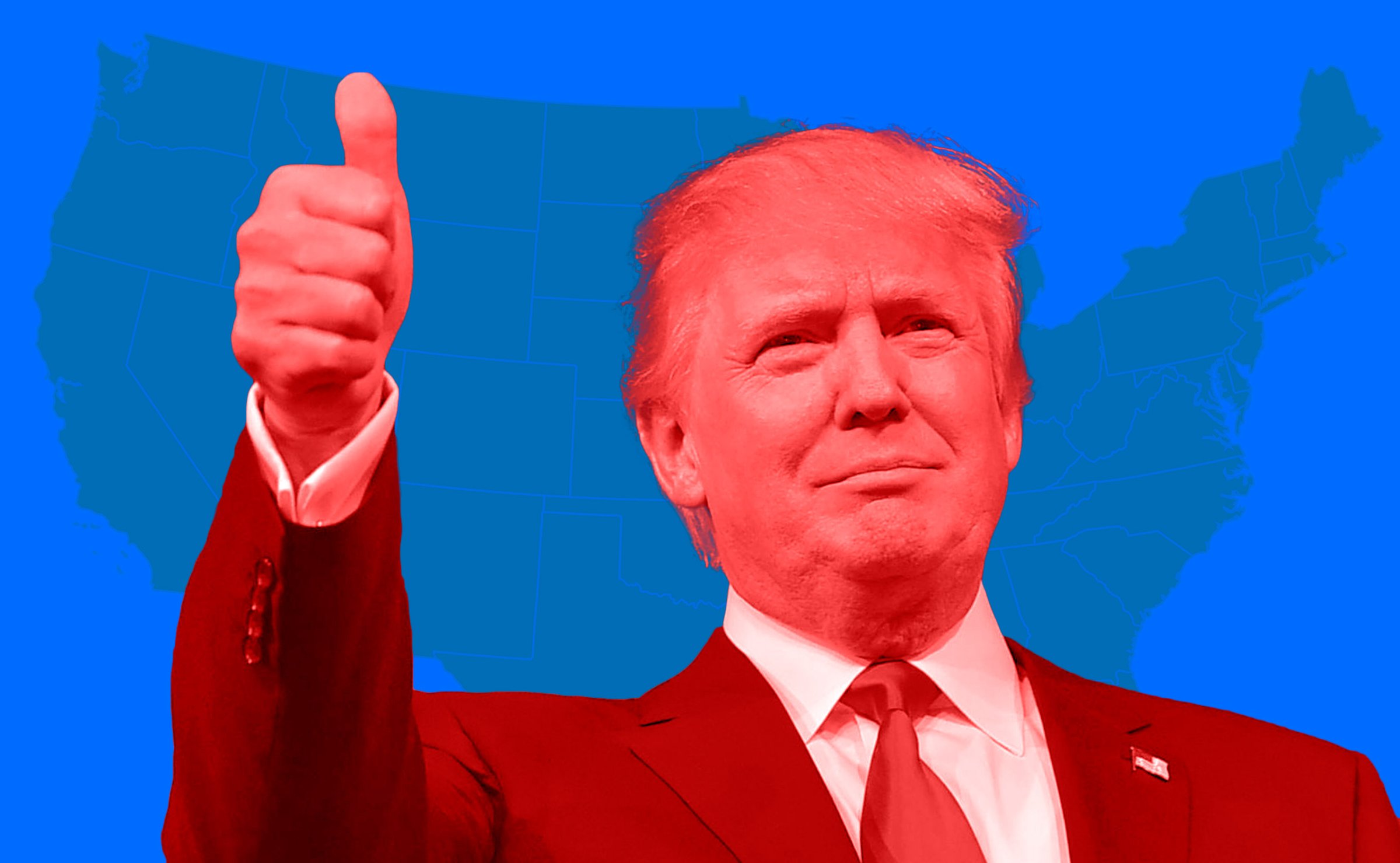
Donald Trump’s electoral map seeks to turn a lot of blue states red.
His political director told Republican lawmakers last week that he’d target 17 states, including typically Democratic-voting states of Maine, Michigan, Minnesota, Wisconsin and Pennsylvania.
Trump later added the reliably blue states of Washington, Oregon and Connecticut to the mix, according to Rep. Peter King, who was at a meeting with the presumptive Republican nominee.
And in a meeting with Republican Senators, Trump promised to win Illinois too.
That’s not to mention New York, California and New Jersey, three Democratic heavyweights that he previously said he would win.
But the Trump campaign and the Republican National Committee aren’t airing TV ads and sending paid staffers to all of these states, a tipoff that some of Trump’s predictions are little more than bluster.
Which blue states can Trump win? Here’s a look at the evidence for seven of them.
Washington
Claim: “We can win; we’re going to win Washington state.” — Trump, speaking to a crowd in Washington in early May, a claim he again made last week.
Evidence: Washington state hasn’t backed a Republican presidential candidate since 1984. Clinton led Trump by 12 percentage points in a poll in mid-June. Trump’s political director is not focusing on the state, and the Republican National Committee has not sent any paid staffers.
Advantage: Clinton. There’s no reason to believe Trump will win Washington.
Oregon
Claim: “In November, we are going to carry your state. Some people say it’s inclined toward the Democrats. And then they tell me, ‘Mr. Trump, you have something we’ve never seen before. You’re going to win this state.'” — Trump, speaking in early May, a claim he again made last week.
Evidence: Oregon hasn’t backed a Republican presidential candidate since 1984. Clinton led Trump by 11 percentage points in a poll in May. Trump’s political director is not focusing on the state, and the Republican National Committee has not sent any paid staffers.
Advantage: Clinton. Again, there’s no evidence Trump will win Oregon.
New Jersey
Claim: “I love New Jersey. I am New Jersey. Like a second home. I have property there. I have a lot of employees there. And frankly, I think we’re going to do well.” — Trump, in an appearance on Hannity in early June.
Evidence: New Jersey hasn’t backed a Republican presidential candidate since 1988. Clinton led Trump by 12 percentage points in a poll in late June. Trump’s political director is not focusing on the state, and the Republican National Committee has not sent any paid staffers. The state went for Republican Gov. Chris Christie twice, but his approval ratings are at an all-time low since he endorsed Trump.
Advantage: Clinton. There’s no reason to believe that Trump will win New Jersey.
Illinois
Claim: “I put so many states in play: Michigan being one. Illinois.” — Trump, speaking in late May, a claim he made again last week.
Evidence: Illinois hasn’t backed a Republican presidential candidate since 1988. Clinton led Trump by 25 percentage points in a poll in early March. Trump’s own political director is not focusing on the state, and the Republican National Committee has not sent any paid staffers.
Advantage: Clinton. The poll is more out-of-date than in some other states, but there’s little evidence things have changed since then.
Maine
Claim: “I will win states that no Republican would even run in.” — Trump, speaking with the Associated Press in May for a story that included his Maine efforts.
Evidence: Maine hasn’t backed a Republican presidential candidate since 1988. Clinton led Trump by seven percentage points in a poll in mid June. Trump’s political director is targeting the state, though the Republican National Committee has not sent any paid staffers. The state twice elected Republican Gov. Paul LePage, who once said he was Trump before Trump was popular.
Advantage: Clinton, with a caveat. She’ll win statewide, but Trump has a shot at picking up an elector in the Second District. (Maine awards an elector to the popular-vote winner in each congressional district.)
Michigan
Claim: “I’m going to win Michigan by a lot. Republicans don’t go there, horror show, closing factories there.” — Trump, speaking in late May.
Evidence: Michigan hasn’t backed a Republican presidential candidate since 1988. Clinton led Trump by four percentage points in a poll in late May. Political forecasters say the state leans Democratic but is not a lock. Trump’s political director is targeting the state, while the Republican National Committee has sent 34 paid staffers.
Advantage: Clinton. The state still leans Democratic and Trump has a long way to go to swing it in his direction.
Pennsylvania
Claim: “I think we’re going to win Pennsylvania easily.” — Trump, speaking in late May.
Evidence: Pennsylvania hasn’t backed a Republican presidential candidate since 1988. Clinton and Trump were essentially tied in a poll in early June. Forecasters say the state leans Democratic but is not a lock. Trump’s political director is targeting the state, while the Republican National Committee has 53 paid staffers here for the presidential race, while
Advantage: Toss-up. Among the seven states on this list, Trump probably has his best shot here, though Democrats have an advantage among registered voters.
More Must-Reads from TIME
- Breaking Down the 2024 Election Calendar
- How Nayib Bukele’s ‘Iron Fist’ Has Transformed El Salvador
- What if Ultra-Processed Foods Aren’t as Bad as You Think?
- How Ukraine Beat Russia in the Battle of the Black Sea
- Long COVID Looks Different in Kids
- How Project 2025 Would Jeopardize Americans’ Health
- What a $129 Frying Pan Says About America’s Eating Habits
- The 32 Most Anticipated Books of Fall 2024
Contact us at letters@time.com